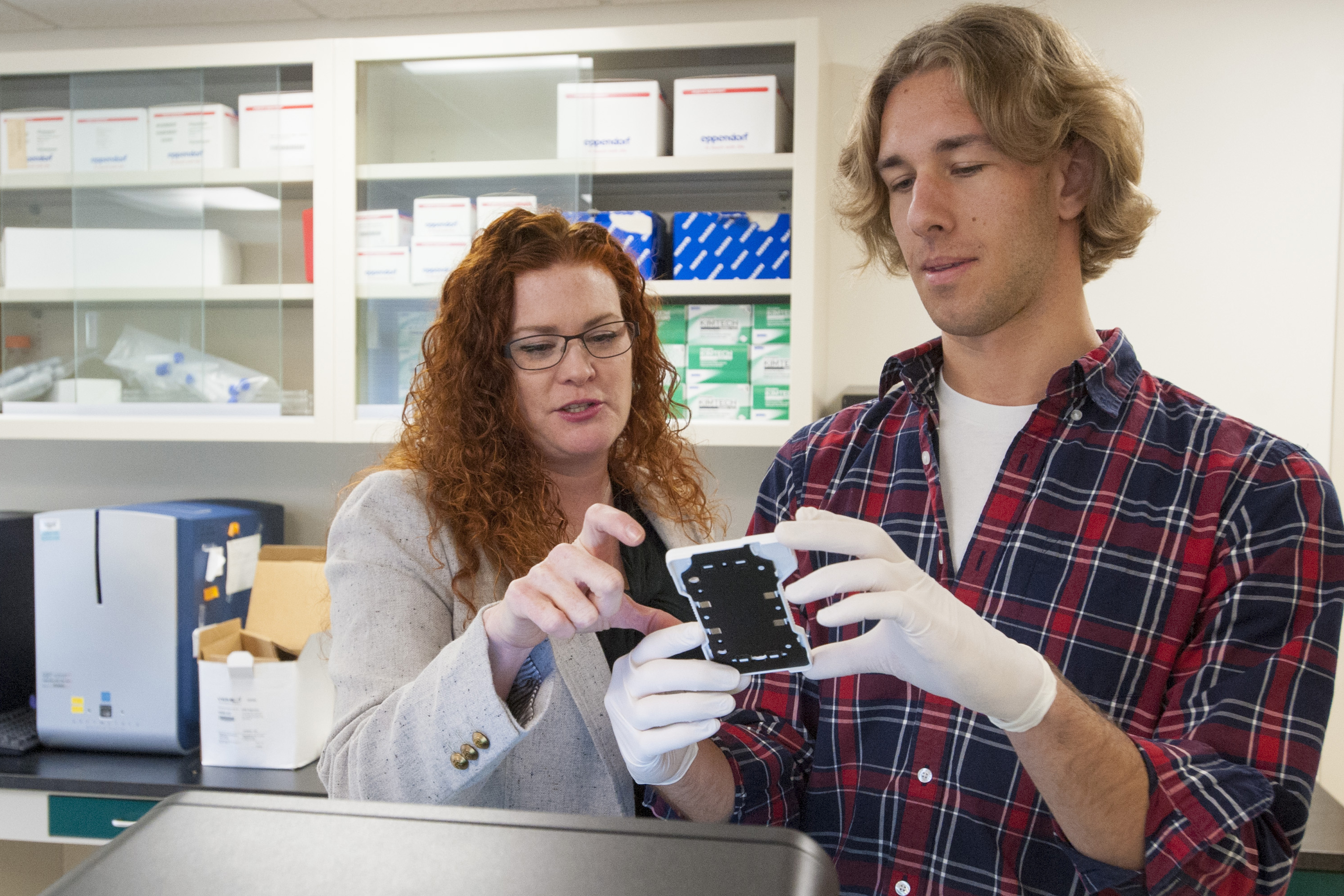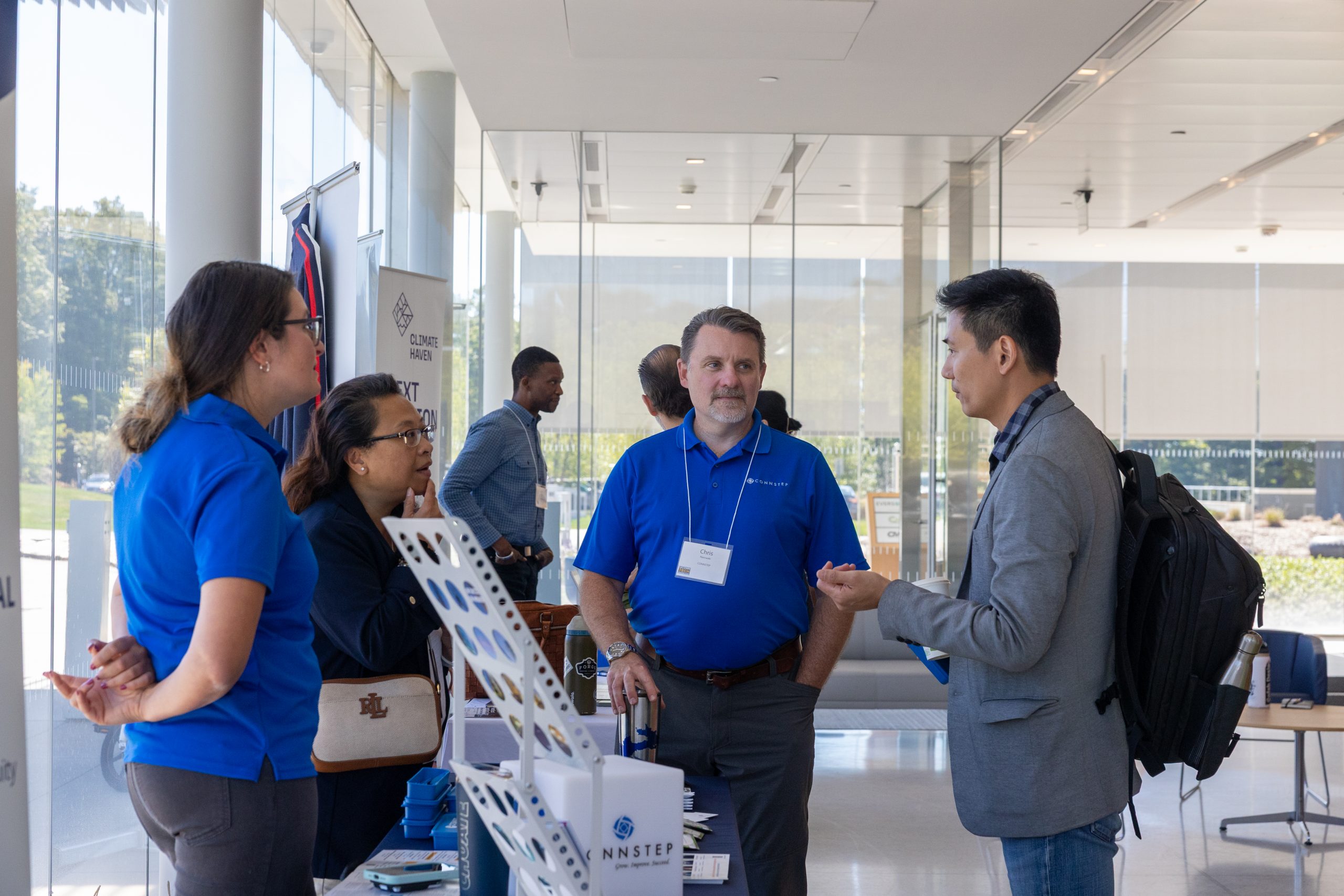Ten students and alumni from the University of Connecticut are among a select group of researchers from across the United States being awarded prestigious Graduate Research Fellowships from the National Science Foundation.
“This the oldest and largest graduate fellowship program sponsored by the federal government,” says Kent Holsinger, dean of the Graduate School and vice provost for graduate education at UConn. “Only a small fraction of the most talented young scientists and engineers are selected for this highly prestigious award every year. These young scientists and engineers already had a bright future in front of them, and now their stars are shining even more brightly.”

Undergraduates Michael Cantara, Alexander Choi, and Brendan Smalec, and graduate students Kevin James Boyd, Matthew Guberman-Pfeffer, Stephanie Knowlton, Austin Reid Spence, and Brittany Sprecher, were chosen as 2016 fellowship recipients from nearly 17,000 applicants to the NSF this year.
Another two awardees are UConn alumni, Ari Fisher (UC Berkley) and Rebecca Wiles (University of Pennsylvania); both 2015 graduates.
Six additional UConn graduate students and 15 more UConn alums received honorable mentions in the fellowship competition.
The awards expand the growing list of UConn students who have secured the influential NSF award. A total of 42 UConn researchers have been awarded NSF fellowships since 2011, and another 61 have been awarded honorable mentions.
Regarded as one of the premier awards in the STEM (science, technology, engineering, and mathematics) disciplines, the NSF awarded 2,000 fellowships this year to support students in the early stages of their research-based master’s or doctoral careers. The fellows will receive an annual stipend of $34,000 for three years and $12,000 support for tuition and fees. The awardees also qualify for international research and professional development opportunities. The total value of the fellowship exceeds $138,000.
For this highly competitive award, applicants must submit research proposals, which are reviewed by expert scientists in their field. NSF fellowship recipients, as well as honorable mentions, represent the most promising young scientists in the nation, and the awards are seen as “investments that will help propel this country’s future innovations and economic growth,” according to a statement released by the agency.
The current UConn student NSF fellowship recipients are listed below, with their research focus.
Undergraduates
Michael Cantara’s physics research has had two main focuses: one, theoretical studies of Q-ball systems and localized field configurations, investigating their structure in the infinitely dilute Q-cloud limit. And secondly, investigations of ultracold Rydberg molecules, specifically the class known as trilobite molecules. He intends to continue his ultracold physics studies in a Ph.D. program after graduating this May.
Alexander Choi’s proposed research in the field of mechanical engineering is to investigate innovative manufacturing technologies’ focus on the characterization and rational manipulation of novel thin film flame-synthesized structures to yield high activity, high stability solid oxide fuel cell (SOFC) components. His research seeks to contribute to more efficient manufacturing of fuel cells, paving the way for greater adoption of clean energy and reductions in CO2 emissions.
Brendan Smalec’s genomics project examines cancer susceptibility and progression in a non-traditional mammalian model, specifically, the Peromyscus leucopus, or white-footed mouse. Working with an inbred line of P. leucopus found to be highly susceptible to developing an adenocarcinoma (cancer from a glandular origin) of the Harderian gland, the project seeks to determine what genetic signatures are present in the inbred mice line that predispose them to developing this cancer, and also what makes it so highly metastatic, since metastasis is usually the cause of death in most cancer-related fatalities.
Graduate Students
Kevin James Boyd’s work in structural biology uses computational and experimental methods to investigate the structure-function relationships of the mitochondrial translocase Tim23 protein.
Matthew Guberman-Pfeffer’s chemistry research involves the use of molecular simulations to gain fundamental insight into a variety of chemical problems. He plans to investigate the structural features that optimally regulate light harvesting by a natural antenna protein complex. By elucidating the structural mechanisms that optimize the capture and use of solar energy for photosynthetic life, knowledge for the rational design of bio-inspired solar cells capable of meeting human energy demands may be advanced.
Stephanie Knowlton in Biomedical Engineering has developed a low-cost device composed of a cell phone and magnets to diagnose and monitor sickle cell disease. The device basically separates micro particles based on their densities and magnetic signature, which is useful for diagnostic applications. Her goal is to test the device, which attaches to and uses the camera of a smartphone for image analysis of blood cells.
Austin Reid Spence in Ecology is investigating how physiology shapes the range limits of hummingbirds in California. Hummingbirds are already at physiological extremes, and make a great study organism to investigate how physiology varies along the changing environment of the Sierra Nevada mountain range. His goal is to find out how hummingbird ranges will be affected by climate change.
The primary goal of Brittany Sprecher’s research in geosciences-biological oceanography is to look at phytate as a growth substrate for dinoflagellates. Dinoflagellates are an important class of primary producers. Key findings will provide a novel perspective on phosphorous utilization in dinoflagellates. If phytate utilization is found, phytate could be used as a molecular marker for future studies to survey the phytate-utilizing ability in global phytoplankton communities.



